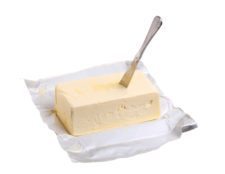Tradition vs Evidence-based Wound Care Practice
Evidence-based Wound Management
As clinicians, we know that patients do not always act in their own best interest. They may cling to old remedies based on tradition or folklore, rather than researching current and accepted treatments. An example of this is applying butter to burn wounds. As practitioners we know that this is not an accepted practice and may lead to infection, not to mention making cleaning of the wound more difficult. However, it can be difficult to convince patients that the old way is not necessarily the best way.
Clinicians can also be mired down in old practices and beliefs. A prime example is the use of wet to dry dressings, which we now know can force the removal of newly granulated tissue and reduce the temperature of the wound bed, both of which can prolong healing, not to mention the pain caused when wet to dry dressings are allowed to dry out and adhere to the wound.
Another example of “living in the past” is the use of antiseptics for wound cleansing. Although solutions such as Betadine and hydrogen peroxide are extremely effective at removing debris and reducing bacterial contamination on intact skin (i.e. as surgical scrubs), they can be harmful when applied to wounds, yet this practice still flourishes. Antiseptic solutions have been shown to be cytotoxic to cells. Even when these solutions are diluted, they are still cytotoxic; furthermore, diluted solutions may not effectively kill microorganisms. Current research supports using normal saline to cleanse wounds and has shown that antiseptics are not required and can be detrimental.
The moral of the story? Wound care treatment and practices should be prescribed based on current knowledge and literature, and those practices that have no supporting research showing that they are helpful and not harmful should be abandoned. When we cling to old practices and ways of doing things, we are doing our patients a great disservice. Before you recommend a treatment or dressing protocol, you should be asking yourself whether the recommended treatment is based on what we currently understand about wound care management, as it is our professional responsibility to keep abreast of the latest knowledge and change our practices accordingly.
Sources
Meyers, B. (2008). Wound Management: Practices and Principles. 2nd edition. Pearson Prentice Hall. Upper Saddle River, New Jersey. pg. 33-34.
Cowan, L & Stechmiller, J. (2009). Prevalence of wet-to-dry dressings in wound care. Advances in Skin and Wound Care, 22(12): pg. 567-573. http://www.researchgate.net/publication/40028438_Prevalence_of_wet-to-dry_dressings_in_wound_care
Gabriel, A. Wound irrigation. Medscape. Updated August 2013. http://emedicine.medscape.com/article/1895071-overview


How do we get physicians to change? To get them on to better practices and away from the wet to dry modality or even moist gauze to the wound for moist wound environment? This is making me a bit crazy as a RN/WCC/OMS.
Yesterday I learned that they still are currently teaching wet to dry dressings in nursing school and local university here in the city I work in. We have students that do clinicals in our hospital and we stubbled on to this conversation.
Do you know of a good web-site to give standards of care or best practices which rule out Wet to Dry?
Rhonda,
We offer corporate training and group discounts, so anyone you come across that may not be practicing the best, most-up-to-date wound care practices, send them our way. We also have a few videos on our Youtube channel that may help doctors and nurses decide which dressing to choose.